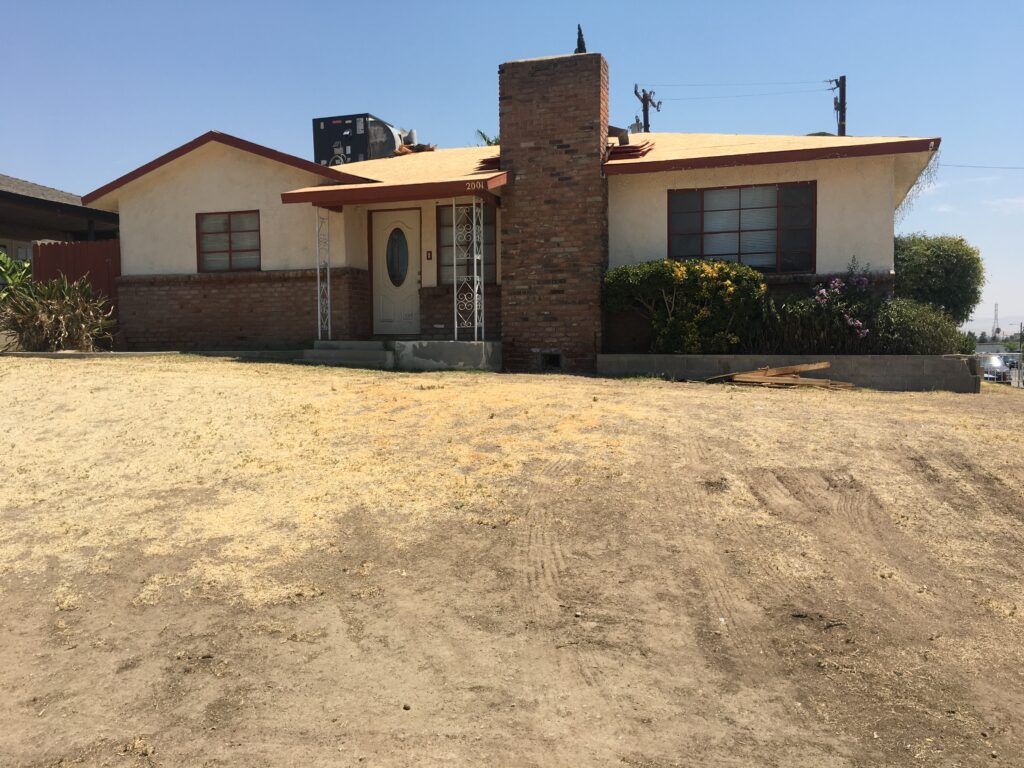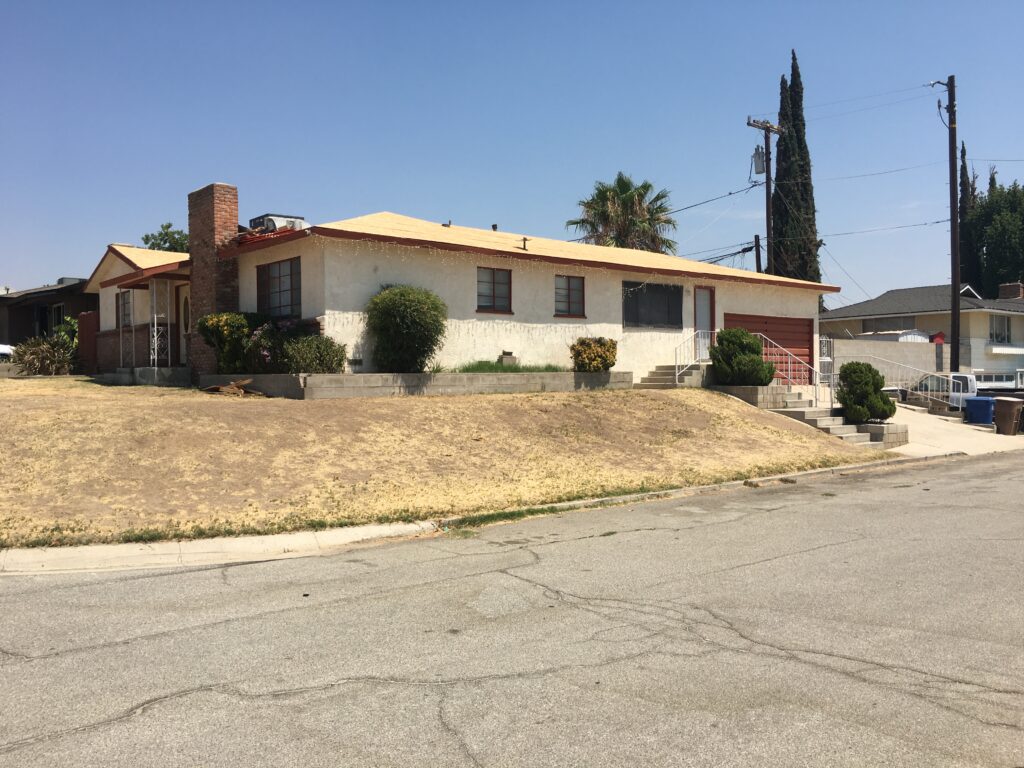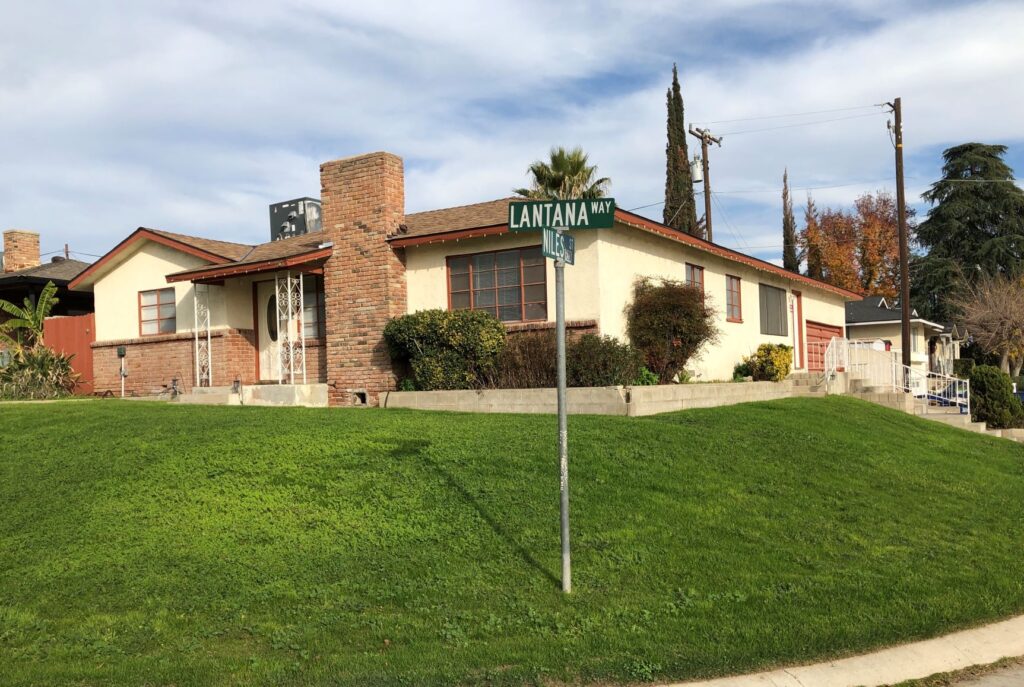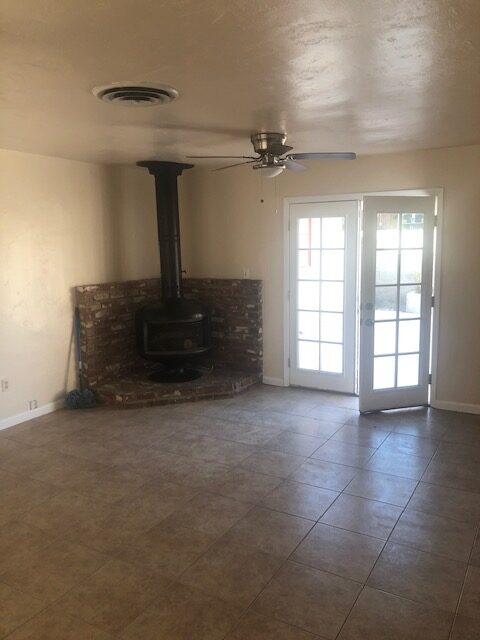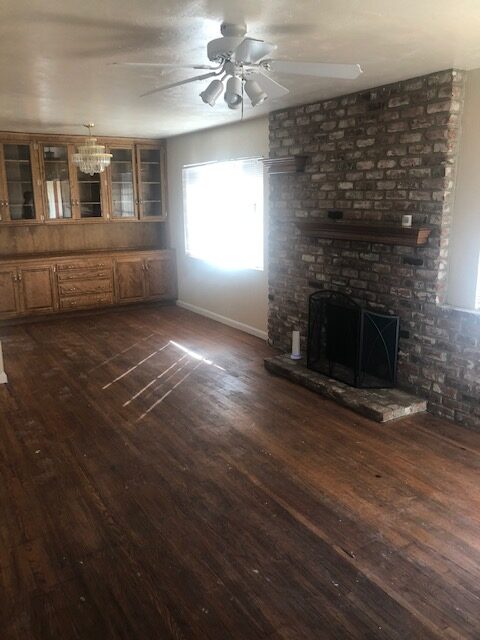Funding through a bank or conventional lender is always the best option, but not always available. This is especially true with a fix and flip project or a rental that needs substantial renovations. So where to go to fund a project that has a $150,000 asking price, $50,000 in rehab cost, and a $280,000 After Repair Value (ARV)? A conventional lender would consider this project too risky and therefore would not be willing to fund a loan.

Well, as rehabbers, we are in luck because we still have a couple of options, short of using our own money. The first option would be to bring in an investor. Someone with deep pockets that is willing to fund most, if not, all of the project. One advantage here, is we can negotiate better terms with an investor than with a hard money lender. But investors, like conventional lenders, may be hard to come by in this situation unless you have an extensive track record and have done a lot of networking to line up potential investors. If the first option is unavailable, we have the second option. Yes, I am talking about a hard money lender.

The definition of a hard money lender is a private company or individual willing to loan you money secured by the real property, and possibly taking second position on other properties in your portfolio. Because they are private lenders they are not bound by many of the rules conventional lenders contend with, and therefore, they charge a higher interest rate due to the higher risk. There are pluses and minuses working with hard money lenders. On the plus side they tend to work very quickly meaning quicker approvals and faster closings. They are generally more lenient when it comes to credit scores and don’t charge prepayment penalties. Obviously, the big one, they lend on fix and flip properties. On the negative side, there is that pesky higher interest rate, usually in the 9% to 12% range. You will also probably have to put up some money out of your own pocket. The loan term is shorter, a one-year or two-year loan term being the norm. Although they will go, on occasion, as long as five years. Points are generally paid upfront and if, for some reason, the length of the loan has to be extended the extension fees could be quite high.
Fortunately for us rehabbers, there are plenty of hard money lenders out there. This means we can shop around for the best deal. There can be quite a difference from one lender to the next in the way they structure a deal since, as mentioned above, they don’t have to adhere to the same guidelines as conventional lenders. You will want to ask them a lot of questions before going forward with the loan. What do you need to know before signing on the dotted line?
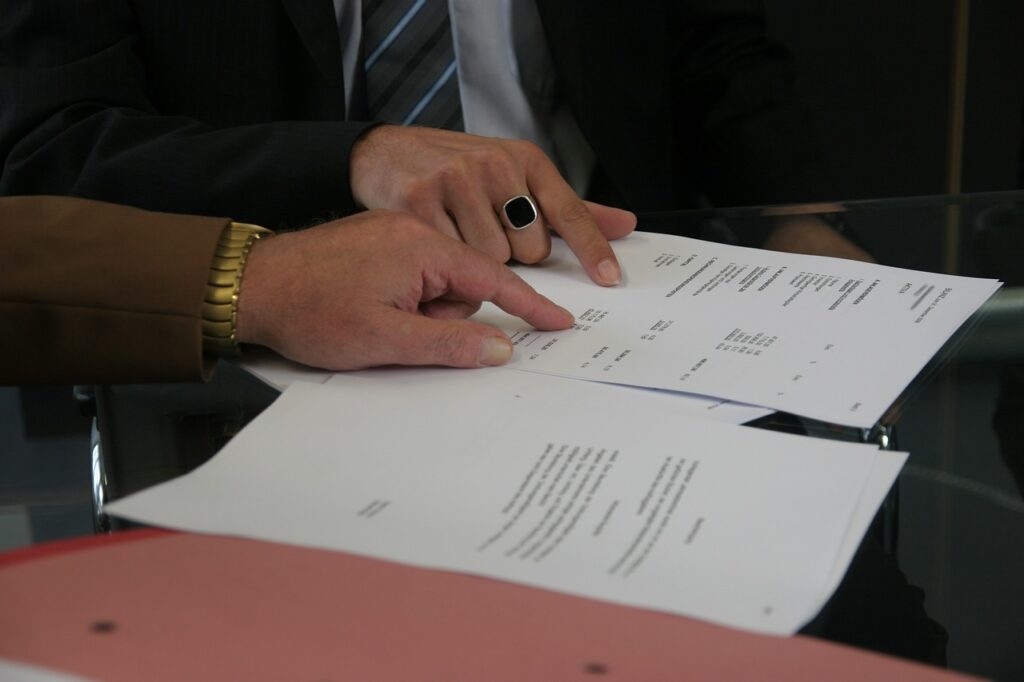
Everybody seems to have their top ten list of questions to ask a hard money lender. Must be the David Letterman influence. I will dispense with any numerical value and just say these are the questions that are important to me when talking to a hard money lender. The number of questions is unimportant. What is important are the answers you get back.
Are you a direct lender, or will you broker this loan to another source?—This is kind of a trick question. As a direct lender they will probably be able to fund a loan much faster with fewer hiccups along the way. As a broker they may bring in other lenders. While this can slow the process down or create hiccups along the way, it does have the advantage of putting you in touch with a lender that is specific to your situation which may save you money in the long run.
Do you have references from previous borrowers?—This is important especially if you don’t have a prior relationship with the lender. If they were recommended by someone who you know that’s a plus. If it’s somebody that randomly contacts you via the Internet or snail mail then you definitely want to know their background. I’ll discuss this in more depth below.
How much experience do you have in hard money lending?—Again, This goes hand in hand with the previous question. Just as they are going to want to know how much experience you have had flipping houses you, should know how much experience they have making loans. Many hard money lenders started out as investors themselves and may still have their own investment portfolio. This means they are familiar with many of the challenges we face. Get a feel for their track record. How many years they have been doing this? What size is a typical loan? How many loans are they carrying currently?
What is your real estate license ID?—You want to be sure that you are dealing with someone that is licensed. The number will appear on their website, business card, or any other advertising material. It will allow you to research additional information on that individual or company, including any consumer complaints or disciplinary actions that may have been taken in the past.
What is your interest rate and how many points do you charge?—Now we get into the numbers, my favorite part. Interest rates with hard money lenders can vary quite a bit. Currently as low as 9% and as high as 12% and possibly higher depending on the situation. If you have a situation where you are rehabbing a house with a lot of fire damage or is nearly a teardown, this is where working with a hard money broker may come in handy. They can sell your loan to somebody that is less risk averse and be willing to negotiate better terms because, in that particular situation, you’re probably going to pay a hefty interest rate. When it comes to points, generally they are charged up front and can be quite expensive. For example, two points on a $150,000 loan can run you $3000. Ask them if they are willing to negotiate the points.
What are your originating fees?—Many times hard money lenders will tell you all about their interest rates and points but leave out other upfront fees such as origination, documentation, and miscellaneous processing fees. Not to mention escrow fees that the escrow company is going to charge. Make sure you are aware of what and how much these fees are ahead of time.
What loan to value ratio are they offering?—This will determine how much money they can lend you on a given project. For example, if they are offering a 70% LTV on a project with a value of $200,000 you would only be able to get $140,000 in working capital. On the other hand, if their LTV is 80% that would be good for an additional $20,000.
Is there a prepayment penalty?—Good information to have. Typically, a hard money lender won’t have a prepayment penalty, especially on a flip. But, if they do, you want to know that ahead of time and how much it is. I made the mistake of selling a property that had recently been refinanced through a conventional lender. At the time of the refinance, I was planning on holding onto the property, so prepayment penalties didn’t really concern me. My situation changed as I decided to take advantage of the current hot market and cash in on some of the equity. Unfortunately, there was $8000 prepayment penalty if I sold the property at any time in the first two years. The bank, unfortunately, could not waive or reduce that fee. But, because of a strong relationship I have with them, they are working with me on reducing some costs in other areas. Again, this is an example of the value of knowing your banker.
How long will it take to fund the loan?—Generally, hard money lenders work very quickly. Still, you want to know the average time it takes them to fund a loan. This is especially true if you are on a timetable to open and fund an escrow. You’ll find that as you become more familiar with the lender the turnaround time should go down.
How long of a loan term is available?—Most hard money lenders will give you 12 months on a fix and flip project. Depending on the size and scope they may extend that term. I was looking at a potential project that would have taken the better part of a year just to rehab. Mostly due to permitting with the city. It was a commercial building so then there was the question of was I going to keep it as a rental or flip it. In either event, it would probably have taken at least another six months to work through either of those processes. My hard moneylender was willing to offer two years terms. This was at least partially due to the success I had had with other projects involving him.
How much will it cost to extend the term of the loan if I don’t sell the property in time?—Usually, if you are unable to move the property by the end of the term, the lender is willing to work with you and offer an extension on the loan. But there will be a cost to that, usually anywhere from 1 to 3%.
Are rehab costs for a fix and flip project included?—This is another important question because some lenders will only lend on the cost of the property. That means all rehab costs will have to come from another source, usually your pocket. The hard money lender may not cover all of the rehab costs but if they cover a good percentage of it that’s a positive.
Do you lend on residential owner occupied properties?—This will not apply to everyone. As an example, maybe you are looking at funding a duplex or triplex that needs a lot of work. You plan to live in one unit and rent the other one or two units out. That’s a good idea, especially for an inexperienced investor. When it comes to conventional lenders you will find that you get a better rate for being owner occupied. Not all hard money lenders will lend on an owner-occupied project though. If this is your plan, make sure the lender is aware of it up front.
Those are 13 questions that I would ask any hard money lender. I’m kind of superstitious so, since the last question doesn’t really apply to everyone, we’ll call it 12-1/2 questions. When in need of a hard money lender, I have gone to Scott Hanson with Level One Financial here in Bakersfield. I decided to get it straight from the proverbial horses’ mouth and Scott was generous enough to provide some insight and perspective as a hard money lender.
One thing I have noticed as a real estate investor is, lately, I seem to be inundated with advertisements, mostly via email, from hard money lenders. Most of these lenders are probably legitimate, although there are some scam artists out there or lenders that are just outright fishing. I asked Scott what his advice would be to someone that is looking for a new hard money lender. He responded by saying that as a new investor you should find a lender that looks at you as more of a partner than just a client. A lot of hard money lenders just want to do the deal and don’t really care whether or not you are successful as long as they get their money. It’s a short-term quantity over quality approach. Scott’s philosophy is that if he can help you to profit then he is going to profit as well. He is an investor himself and knows the ins and outs of the business. If he sees a problem with the deal you’re trying to put together, he will let you know and possibly save you from a train wreck. In that regard, if he can save you some money somewhere in the process he will. Your success is his success, and you will keep coming back to him for future business. He is really more interested in a long-term relationship rather than the one and done. So try to get a feel for the lender’s commitment to you in a partnership rather than just a strict business relationship.

When looking for a potential client, how important is their credit score? I was a little surprised by his answer although not totally. I know that, as hard money lenders go, the credit score is not as important as it is with a conventional lending institution. What did surprise me was how far down he rates a good credit score. He told me that when he looks at a potential client and the deal they’re offering the number one thing is equity. How much potential profit is there in the deal? As we all know, this business is all about the numbers. If the project has a great bottom line, then credit score isn’t really a factor. The second thing he looks at is the experience level of the investor. How long has he been doing this? How many deals has he done? How much experience does he have with this type of deal? Is he an investor that has been doing a lot of medium-to-high-end flips and now, all of the sudden, is rehabbing a huge commercial building downtown? Is he possibly in over his head? The third thing Scott looks at is the ability to repay the loan. Does the investor have a job that, even if this deal were to go south, he could cover the loan costs? Conversely, is he betting the farm on this one deal and is it going to completely break him if it doesn’t work?
I asked him if he had a preferred range in terms of the dollar size of the loan. Scott works mostly in the Kern County area although has done some loans out on the coast. He said that the market pretty much dictates the size of the loan, and this is probably true of most hard money lenders. Most flippers are going to want to pick up properties at slightly below the median price range in that area. In Bakersfield that’s in the $250,000 range and less. A comparable flip on the coast might be $700,000 to $800,000. There aren’t a lot of houses worth flipping in that price range in Bakersfield and even if you found one it would be even harder to find a buyer after the rehab. Most of the loans Scott does are in that sweet $150,000 to $250,000 range.
We are currently in one of the hottest real estate markets since the crash in 2008. In Bakersfield it is particularly hot due to a lack of inventory. There has been an influx of buyers from Southern California and the Bay Area looking to move into Kern County where housing is more affordable, and they can work remotely. Construction simply cannot keep up with the demand. Scotts’ take was interesting. He pointed out that the two key segments driving the market are underwriting and appraising. Both of these segments are doing their jobs correctly. Underwriters are qualifying loans without any of the special offers or “additional” income factors which were ignored before the crash in ’08. Meanwhile appraisers are still being very conservative in their appraisals. I think this is borne out somewhat by the fact that many houses are being sold at above list price. Scott also pointed out a statistic that I was unaware of. It seems that 40% of the money that is currently in circulation was printed in the last 12 months. That means that the markets are flooded with cash. Scott feels that as long as underwriting and appraisals remain conservative, interest rates stay relatively low, and there is cash availability this hot market can sustain itself. He said it may go on another year to 18 months, but he also wouldn’t be surprised if the market stays hot for another three or four years.
One final question I asked, as the market changes, how does he hedge against rising interest rates. He replied that most hard money lenders are going to keep their terms short. As I mentioned above, one to two years is the norm. By definition, a hard money lender will charge higher rates than a conventional lender. If conventional lending rates were to go up to 6% or 7% then hard money lenders would definitely feel the squeeze. Of course, their interest rates will rise in conjunction, and this is the reason you won’t find hard money lenders doing long term loans. By definition, a hard money loan is only meant as a temporary fix anyway. As I state in the example below, we used the hard money loan long enough to get the rehab done, season the property, and refinance into a conventional loan.
Now if you will bear with me dear readers, I will use the tail end of this blog to fill you in on an investment strategy that has worked well for me. This uses a combination of hard money and conventional lending.
We had a project that was worth $180,000 ARV. We were able to pick the property up for $72,000. It needed about $35,000 in rehab. In this case we used an investor rather than a hard money lender. As I mentioned, you can usually get a better deal using an investor. In this situation, we had an investor available that was willing to fund the entire project. It made more sense to use that investor rather than a hard money lender. Even if we had gone with a hard money lender it would not have changed the deal all that much other than we would have had to come out-of-pocket some on the rehab. We got a $105,000 loan at a favorable 10% rate to purchase the property. We rehabbed the property but, rather than flip it, we decided to turn it into a rental. We actually had inherited a tenant who stayed in the property during the rehab process and we decided we didn’t want to kick her out.
So now we did what is known as seasoning. We sat on the property for six months and collected rent. We do this for two reasons. First, we had gotten an appraisal on the property when we initially bought it. That appraisal follows the property for six months, which means, if we want to get a new loan on it, the bank uses that original appraised value even though the house was now worth much more. Second, the bank likes to see cash flow. By waiting six months and collecting rent, we could show them a P&L statement demonstrating the property making income month over month. After six months of seasoning, we went to Tri Counties bank and asked them for a new loan on the property. They got a new appraisal which valued the property at $180,000. We got a new 5% loan which repaid our investor and reduced our previous interest only payments by about $200 a month. A few years later we refinanced the loan at 4-1/4% moving the payments down an additional $50 a month. Here is the bottom line. We own a property, which is now valued at $210,000, and has a loan balance of about $107,000. Meaning we have about $103,000 in equity. We have a positive cash flow of about $700 a month on our rental income. And we have absolutely none of our own money invested in this project. That’s the way it’s done.
I want to thank Scott Hanson of Level One Financial for his input in my blog today. If you have a deal that needs funding, you can contact Scott at (661) 464-8000. Once again readers I hope you enjoyed this blog and found it informative. One of the great things about writing this, is I get to learn new things along with you. Next week we’re going back to baseball. This week is the All-Star break, the traditional halfway point for the Major League Baseball season. I will put together my mid-season report card. Which teams are doing better than expected, which teams are doing worse than expected, and which teams are doing about as expected. I’ll also try and project from that, who to watch in the second half the season and how the Pennant races will shape up. As always, if you enjoyed this blog, please leave your comments below. Apparently last week’s blog on deep pit barbecue was a big hit. Let’s see if we can’t get this one to outperform that one.
